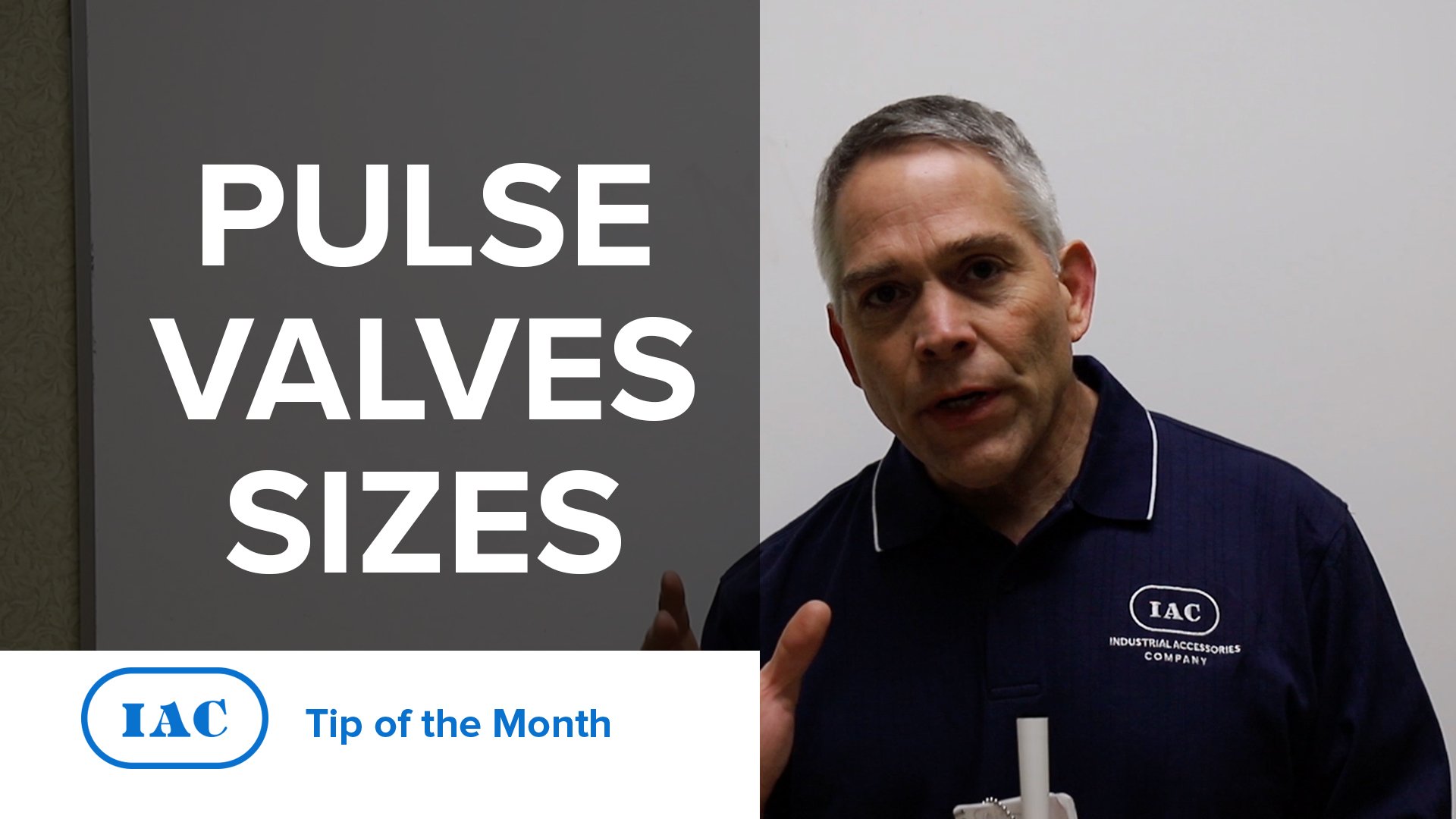How to Select the Right Pulse Valve Size for Your Pulse Jet Baghouse

In last month’s Tip of the Month Video, IAC’s Luis Castano, explained the importance of the solenoid position on a pulse valve and how it affects the efficiency of the pulse jet cleaning system in a baghouse. For this month’s tip, Luis highlights the importance of the size of the pulse valve.
The goal of a pulse jet system is to fire with a strong pulse in order to get a solid cleaning effect allowing for a discharge of dust. There are many different sizes of pulse valves because pulse jet baghouses are manufactured in a wide range of CFM sizes and styles.
Contact IAC today if your systems could benefit from an inspection or seminar and visit our blog page for other Tip of the Month videos from IAC’s Luis Castano.
A common issue that arises is that the pulse jet valve is undersized in comparison to the size of the baghouse dust collector, which means that the pulse valve is not firing with enough intensity and sounds very weak. The baghouse is not getting a good cleaning from the pulse valve which affects the entire process.
In many cases, the solution is to replace the small pulse valves with larger ones. Even the difference of a half inch can allow for a much greater pulsing effect in the baghouse.
Pulse Valve Sizes Video Transcript:
Hi, I’m Luis Castano with IAC’s two-minute Tip of the Month. Last month we were discussing the solenoid position on the pulse valve, and how it affects the efficiency of the pulse. This month I want to talk briefly about the size of the pulse valve.
Remember, on a pulse jet baghouse you want a good punch - a good cleaning effect - to get a good discharge of dust. Well, there’s different sizes of pulse valves, and I have seen a lot of pretty big dust collectors with fairly small pulse valves.
Just to give you an idea, recently I saw a baghouse unit with sixteen valves per row, each with a one inch (1”) valve. Immediately, I knew that it was undersized, and the bottom line is that the pulse sounded very weak, pfft. It’s not getting good cleaning, which affects the process, and that is a big problem, so we’re looking at upgrading to an inch and a half (1.5”) valve.
An inch and a half valve (1.5”) pulse valve as you can see [by the drawing on the whiteboard], you’d say well it’s 50% bigger, right? From one inch (1”) to one and a half (1.5”). But it’s a lot more than that, because we’re talking about the area of a circle, so it’s actually 2.25 times bigger (if my math is right). It’s a lot bigger, so that means when the solenoid sends a signal, you get boom! And when it closes, you get a lot of pulsing effect versus a one inch (1”) valve that probably gave you this [smaller area on drawing] area of punching effect.
Sometimes the solution is to do an upgrade. It can be done by cutting on the baghouse unit’s wall, and putting in a bigger header, bigger pulse valves, and you also need a bigger blowpipe. This can make a big difference in your production equipment’s [ability to meet production rates].
If you want to discuss this in more detail – if your baghouse is pulsing weakly and you want a bigger punch, talk to one of our engineers and we can propose a solution. Thank you!


